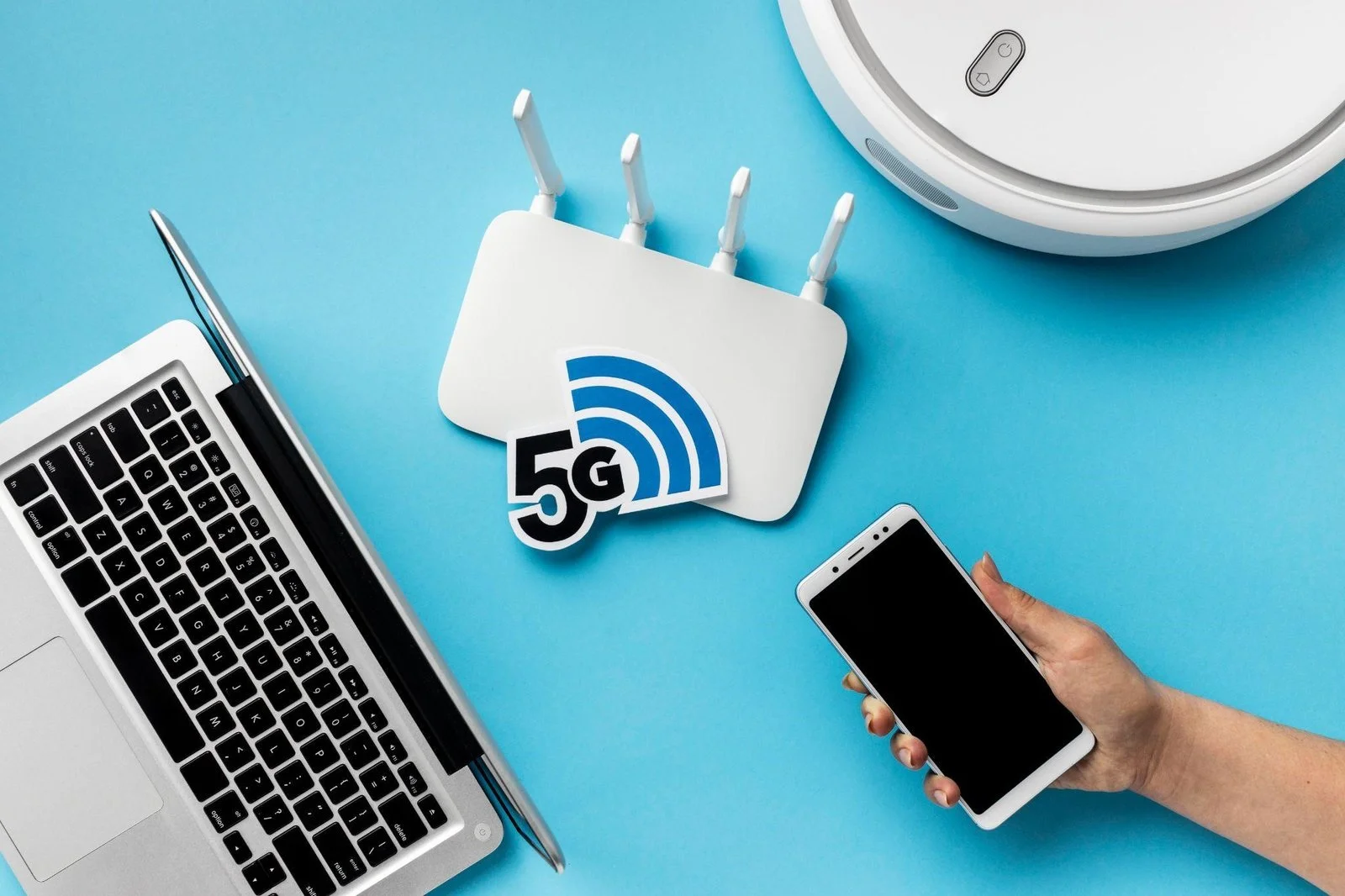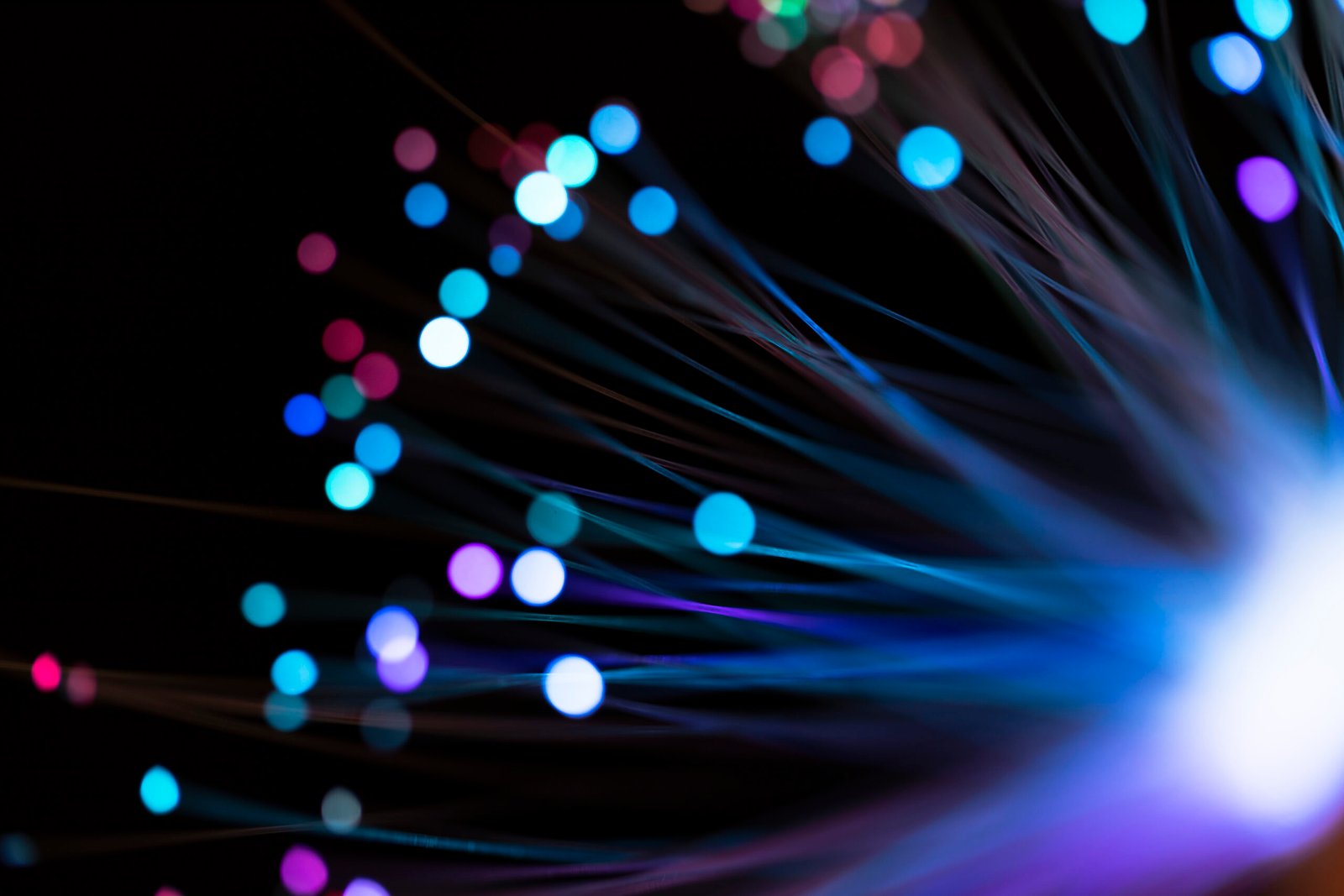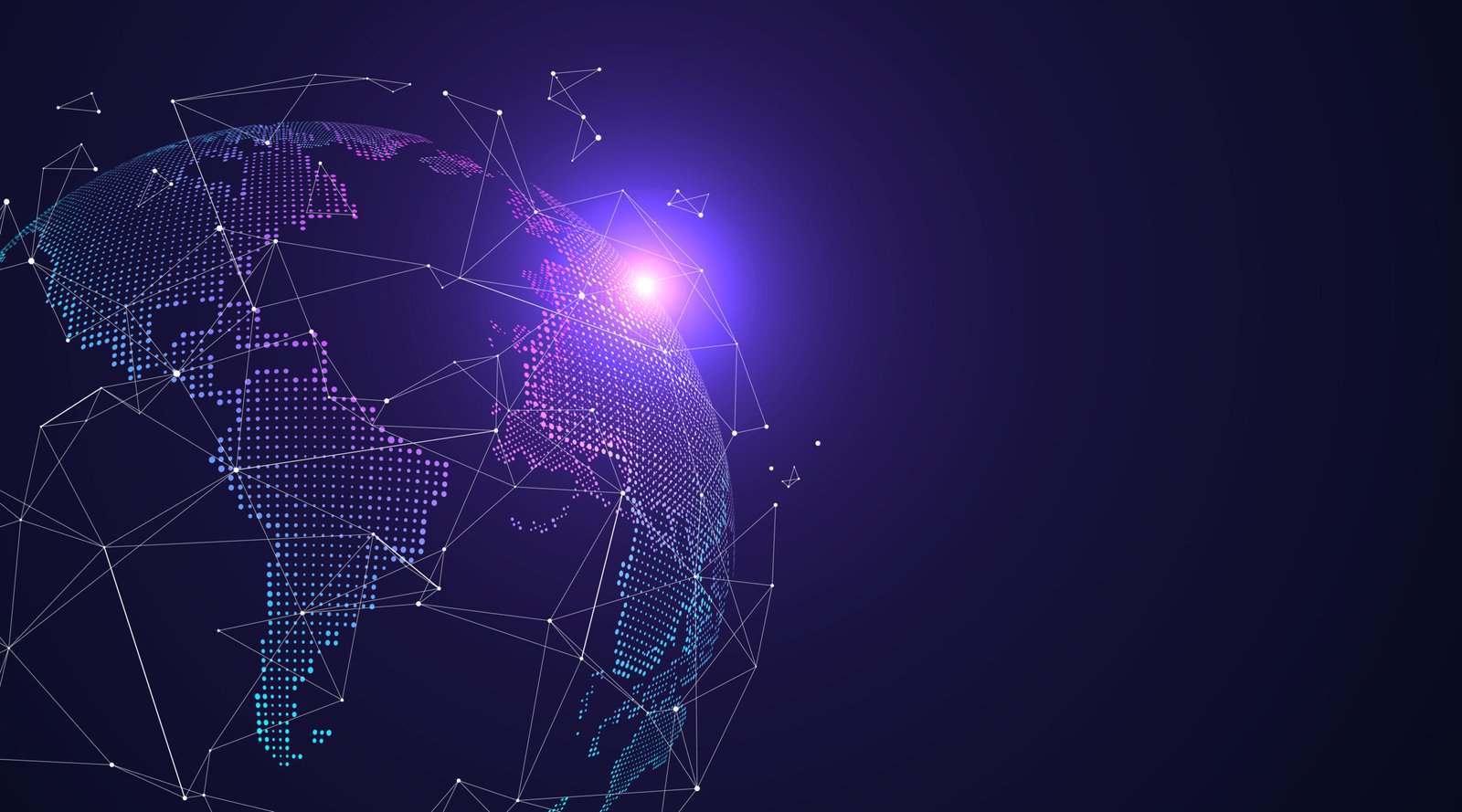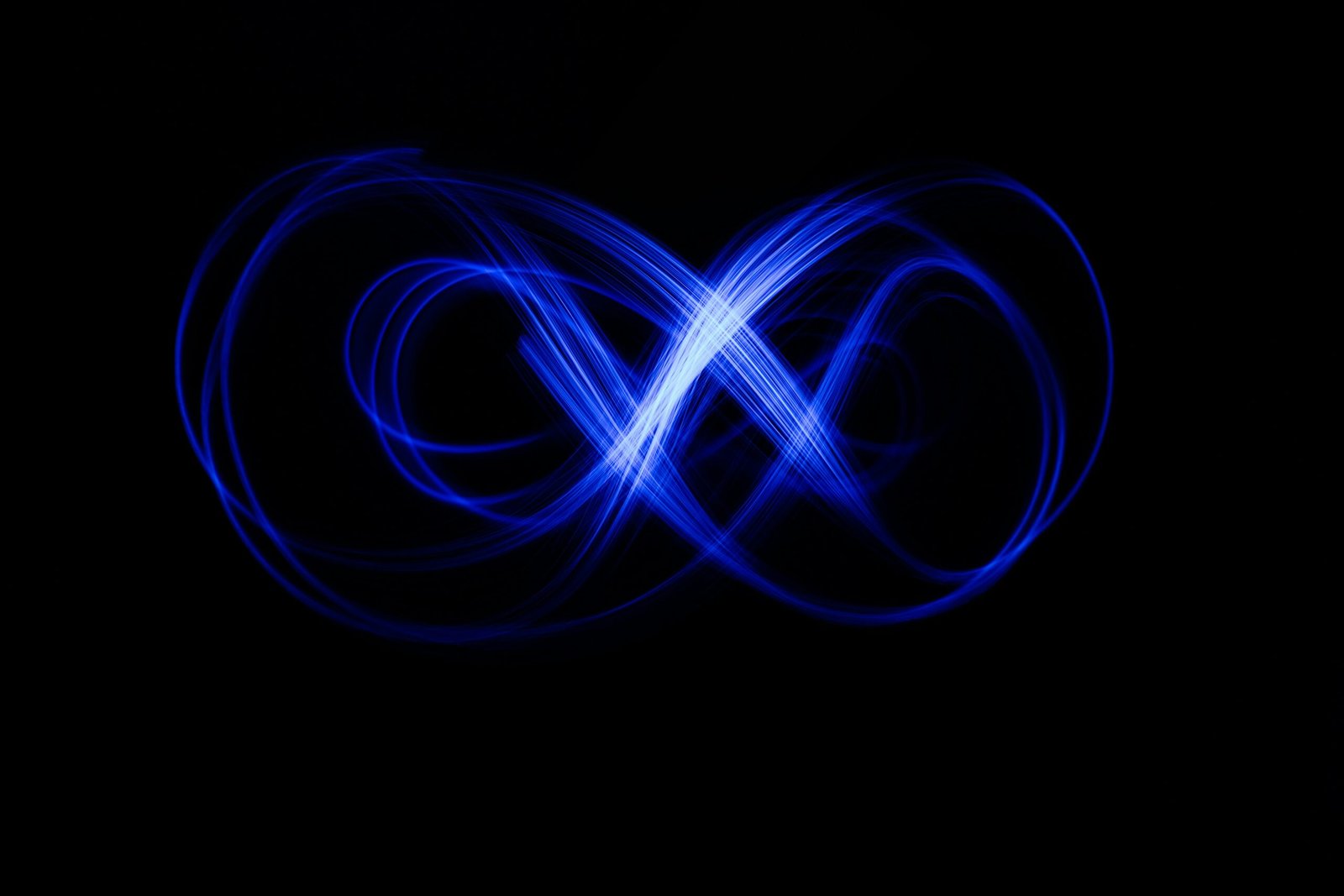
Benefits of Li-Fi Internet: Key Advantages of Using LiFi Technology over WiFi
Safer, healthier, more efficient, and lighter than conventional technologies, the LiFi internet benefits are set to revolutionize the notion of connectivity in many areas.

LiFi Internet Benefits
In an age where connectivity is key, LiFi (Light Fidelity) emerges as a groundbreaking technology poised to transform the way we access and utilize the internet. To understand how Li-Fi can change the fate of internet users, let’s explore the key benefits of LiFi:
1. A Higher-Security Signal
In an ultra-connected world where the most sensitive information is digitized and exchanged via WiFi, cybercrime is living its golden age. Li-Fi is a more secure alternative to traditional Wi-Fi which uses radio frequency waves to transmit data. Radio waves travel longer distances and carry the risk of interference or hacking which is eliminated in the case of Li-Fi waves.
Indeed, a single WiFi access point has an average range of 250 meters outdoors and 35 meters indoors, which makes this technology the preferred terrain for hackers who manage to pirate the signal from outside structures. Li-Fi provides a simple and uncompromising answer to this increasingly central issue of data security. Data transmission via LiFi only takes place in the light beam projected from the ceiling (or desk lamp) to the workstation(s) and does not pass through the walls of the room in which the signal is transmitted. In other words, any room equipped with a LiFi system is completely impervious from the outside, and it is even possible to adjust the coverage angle of the access point so that it only feeds a particular area of the room.
Li-Fi stands out as the superior choice, particularly in terms of security and its efficacy in preventing cybercrimes. As a result, the Li-Fi internet is a real revolution for institutions that deal with sensitive information such as the defense sector, government institutions, research and medical fields. These enhanced security features are key LiFi Internet Benefits.
Also Read: What are the Challenges of Cybersecurity?
2. Highest-Speed Connectivity
With Li-Fi, you get to experience the internet at the speed of light! Li-Fi’s bi-directional transmission technology boosts the speed of data transfer to a rate of 224 Gbps. This surpasses the fastest-known Wi-Fi technology which can only offer a maximum transfer rate of 7 Gbps. In practice, this means that LiFi users can enjoy all the resources of the Internet, such as streaming, video games, video conferencing, and downloading at an unprecedented speed and a lower latency than r than traditional Wi-Fi. Such high-speed connectivity is among the significant LiFi Internet Benefits.

Image by Freepik
3. A Healthier Wi-Fi Alternative
After the implementation of the "Abeille" law on February 9, 2015, related to sobriety, transparency, and consultation in terms of public exposure to electromagnetic waves; establishments offering public WiFi access must clearly indicate this by means of a pictogram at their entrance. Establishments that welcome children under 3 years of age are forbidden to use WiFi in areas reserved for reception, rest, and activities, and WiFi must be switched off in elementary school when it is not being used for an educational activity. This is because a high degree and duration of exposure to radiofrequency waves of WiFi can be detrimental to health- both mental and physical. Children in the early stages of development are especially vulnerable to these frequencies.
Due to its complete reliance on the light intensity variations of an LED bulb, Li-Fi, unlike WiFi, is completely free of electromagnetic waves or radio frequencies. Li-Fi uses the visible part of the electromagnetic spectrum, also called optical spectrum, to transmit data. This means that establishments opting to use LiFi Internet as a WiFi alternative will provide a smoother and easier internet-connectivity experience for its members or visitors. This health benefit is another important aspect of LiFi Internet Benefits.
This characteristic makes Li-Fi a preferred wireless connectivity solution for schools, hospitals, retirement homes, or any other establishment hosting a vulnerable public.
Also Read: LiFi vs WiFi - Understanding Core Differences
4. Increased Stability of LiFi Internet
Li-Fi offers a stable connection, creating a smoother and more reliable digital experience for users. Compared to traditional internet, it gives an exponentially improved connectivity experience by minimizing dropouts and disruptions that are a common problem when using radio frequency-based signals. This stability is one of the core LiFi Internet Benefits.
While latency increases with the number of users connected to traditional technologies, Li-Fi is able to provide consistent connectivity to each user with a latency of as little as 0.5 milliseconds, even in a room with more than 30 people.
In both business and education environments, this unprecedented connection stability opens the doors to better functionality of collaborative platforms, video meetings, online exams, MOOCs, interactive games, etc.
5. Li-Fi Signals are Zero Interference
The light waves on which Li-Fi operates do not interfere with the waves emitted by other wireless communication technologies (WiFi, 4G, 5G networks) that are often present in the vicinity of Li-Fi's use. This lack of interference makes Li-Fi particularly suitable for use in the aviation industry, as it does not interfere with the operation of onboard equipment. They are also preferred for undersea exploration, and for establishing wireless communication routes in high-density areas. This zero interference capability highlights the practical LiFi Internet Benefits.
6. Hassle-free Installation
The installation system for Li-Fi Internet is perfectly light, simple, and unobtrusive.
The lightness of a Li-Fi installation makes it ideal for the air transport sector. While an airplane's WiFi equipment weighs about 1.3 tons because of the shielded leather cables used to prevent interference, LiFi can cut that weight in half, with equivalent or even better performance. The result is a significant reduction in CO2 emissions as well as fuel and maintenance costs.In the case of schools or office spaces that require a large or closely-spaced computer network, Li-Fi installations can help in building clearer spaces. Organizations can completely remove the inconvenient and dangerous clusters of cables or wires used in traditional internet connections by switching to Li-Fi.
Li-Fi has few hardware and regulatory constraints and can be integrated into existing lighting systems to create an unobtrusive and functional result. So, switching to Li-Fi doesn't require a complete infrastructure redesign or heavy construction. As more establishments adopt the Li-Fi Internet of Things, we can expect a speed-of-light internet that multiplies the productivity and efficiency of all operations.
7. Environment-friendly Technology
Since LiFi relies on light waves to transmit data, it completely eliminates dependence on radio frequency signals. Research shows that prolonged exposure to electromagnetic waves is harmful to living populations and the environment at large. The wiring and cables used for laying down a WiFi connection, as well as the entire process for their installation can produce electronic wastes and toxic materials that damage the ecosystem. In terms of cost efficiency too, LiFi Internet is ahead of its rivals. This means that overall, LiFi reduces carbon emissions, protects from exposure to harmful radiation, and proves economically cheaper in the long run.
8. Diverse Range of Applications with LiFi Internet
The advanced features of LiFi technology make it a powerhouse in terms of speed, stability, and security. LiFi offers a far greater bandwidth and data transfer speed when compared to other wireless technologies. Utilization of LiFi can help strengthen the IoT (Internet of Things) network by multiplying the ambit of devices and services it can control. LiFi can also be used to enhance productivity and efficiency of operations such as building mechanization, transportation, and traffic management in the near future. The versatility of LiFi, combined with ease of installation make it a highly customizable technology that can serve a wide range of functions. As of now, the use of LiFi is being explored in areas such as aviation, underwater communication, high-density environments and disaster-response systems.
Also Read: How does LiFi Work
By now we all know that a Li-Fi-based internet connection can solve many problems associated with the traditional internet, while also offering enhanced features across most functional dimensions, but the benefits of Li-Fi don't stop there. This is only an introduction to the vast range of solutions we could create, as Li-Fi technology is constantly evolving to serve an ever-expanding host of structures and systems.
If you are interested in learning how the Li-Fi internet can change the face of your business, Contact us for more information about our LiFi solutions.
Yes, Li-Fi is considered better than Wi-Fi in terms of security, latency, health impact, stability, and interference.
Li-Fi, or Light Fidelity, is a wireless communication technology that uses visible light to transmit data, providing high-speed, reliable, and secure internet connectivity.
Yes, Li-Fi installations can contribute to environmental benefits in the air transport sector by reducing weight, resulting in a significant reduction in CO2 emissions, fuel, and maintenance costs. Moreover, LiFi replaces cables, which are made of copper, a highly polluting material due to its limited recyclability and difficult extraction process.
Yes, Li-Fi is a wireless communication technology that uses light waves to transmit data instead of traditional radio frequency-based signals used by Wi-Fi.
Recent articles

Categories
See some more...




